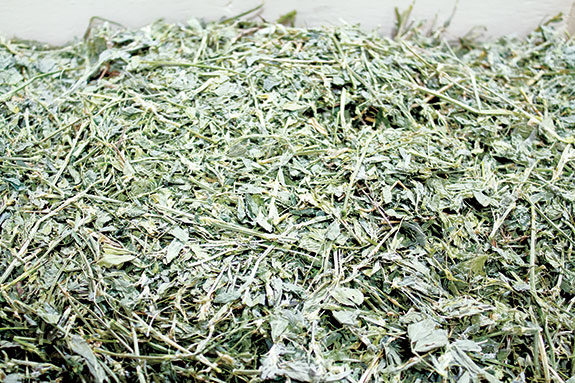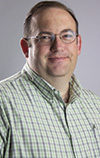Testing discrepancies have been around for a while, says one California dealer who wished to remain anonymous because, he says, giving his name could hurt his business.
But it’s gotten worse this year. “Why, I don’t know,” he says. “But something has to be done about it.”
The issue seems mostly to be between labs in the central and northern regions of the state, he said. A grower in Northern California, for instance, might have his hay tested at 55 TDN, while a dealer in the central region might test the same hay with a result of 53 TDN.
“That’s huge, dollars-and-cents-wise,” he says. “The growers are selling something they say is better than what it is. It doesn’t work that way. It has to be right … I’ve had to pass on a lot of hay because of it.”
Testing is important to determine the protein and energy quantities of hay and can help determine if supplemental and protein energy is needed or when to feed different lots of hay to cattle. Higher-quality hay means better nutrition for milking cows.
He wonders why California labs can’t get into sync.
It’s not just a California problem, however, says Brian Shreve, data manager with the National Forage Testing Association.
It’s a nationwide problem – and part of the blame, he says, may fall onto the producers and dealers themselves. In most cases, it is the sample that is different and not the lab.
“Hay is not a homogeneous material,” Shreve says. “It’s a real basic component made out of stems and leaves. The stems are really high in fiber and low in protein; the leaves are high in protein and low in fiber.
And so, if you pull a sample that misrepresents the composition, not even intentionally but through the sampling process, you can affect the result of the test.”
You can pull three cores side by side, out of one bale, and you’re likely to see differences in those three cores even though you pulled them from the same bale, Shreve says.
He says producers and dealers need to pull at least 20 core samples of hay for testing. Anything less increases the likelihood of error.
“We’ve done studies and that’s the reason you need substantial cores,” he says. “If you think about how a bale is made, when you drive the tractor through the field the hay is getting compressed into the bale, but it’s coming from slightly different areas of the field, perhaps.”
Soil fertility might be stronger in certain areas of the field than others, for instance, which accounts for hay quality. “There are a number of things in the field that can cause variability – and which ends up showing in the bale, too.”
Dan Putnam, forage specialist at the University of California – Davis, echoes similar thoughts, noting that several issues are at stake with regard to accurate testing.
“One of the arguments over hay testing is really how adequate the haystack was … whether or not the sample was taken correctly,” he says. “The sampling really is one of the biggest culprits in this type of thing.”
Samples taken from different bales of hay, even though they may appear to be uniform, have a strong likelihood of having different test results, he says.
“It could be three or four or five points different in terms of TDN, ADF or protein,” Putnam says. “There could be a two-point to four-point difference just due to the sampling changes.”
But even if a dealer samples correctly, there also is the threat of something Putnam calls “lab bias – or the innate differences that might be there between labs.”
The only way to figure out if a lab has bias is to take a ground sample and send it to several different labs. Don’t expect an answer right away, though.
“Just one sample might not prove the point,” Putnam says. “Do that several times, with several samples, and if they routinely come back different you probably are confident that the lab has somewhat of a bias. … I would always urge growers to do their own split samples of labs.
If there’s enough money on the table, then it certainly is something they might want to consider.”
Dan Undersander, agronomist at the University of Wisconsin, says he doesn’t know the specifics about the California issue but that hay testing is done pretty much the same all over the country. They’re done to test not if a preservative has worked but how much protein and energy is in hay.
“Then you balance your rations to whatever animal you’re feeding,” he says, noting that if the sample is taken correctly there shouldn’t be wide discrepancies between lab tests.
There’s always the possibility of small discrepancies, Putnam adds, but at the most they should never be off by more than a point.
Still, at least some of the folks who are dealing with the issue up-close and personal say the labs are the ones at fault, not their sampling methods.
It’s an issue that seems to not be going away, at least not in parts of California. And some believe it might get worse before it gets better.
“I think it’ll eventually come down to litigation,” says another dealer who also wished to remain anonymous. “I’ve had to walk away from a lot of deals because of it. That’s money lost.” FG
Weeks is a freelance writer based in Twin Falls, Idaho.
PHOTO
If you pull a sample that misrepresents the composition, you can affect the result of the test. Photo courtesy of FG staff.











